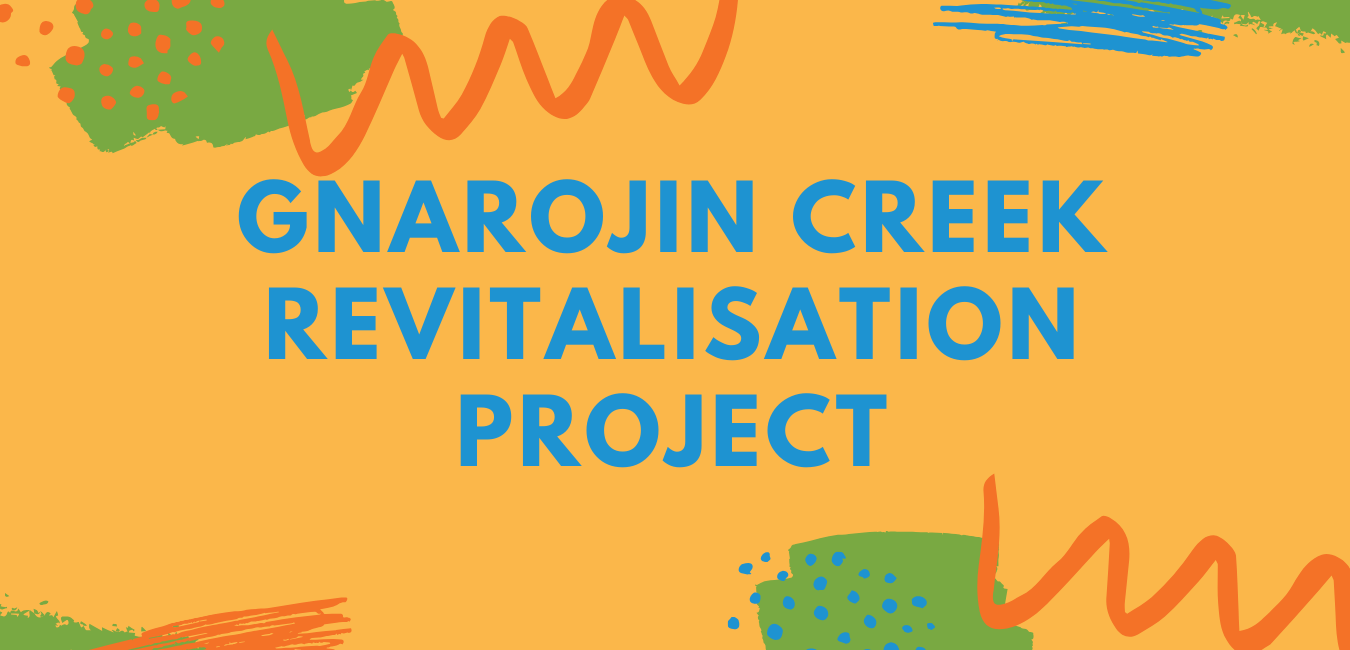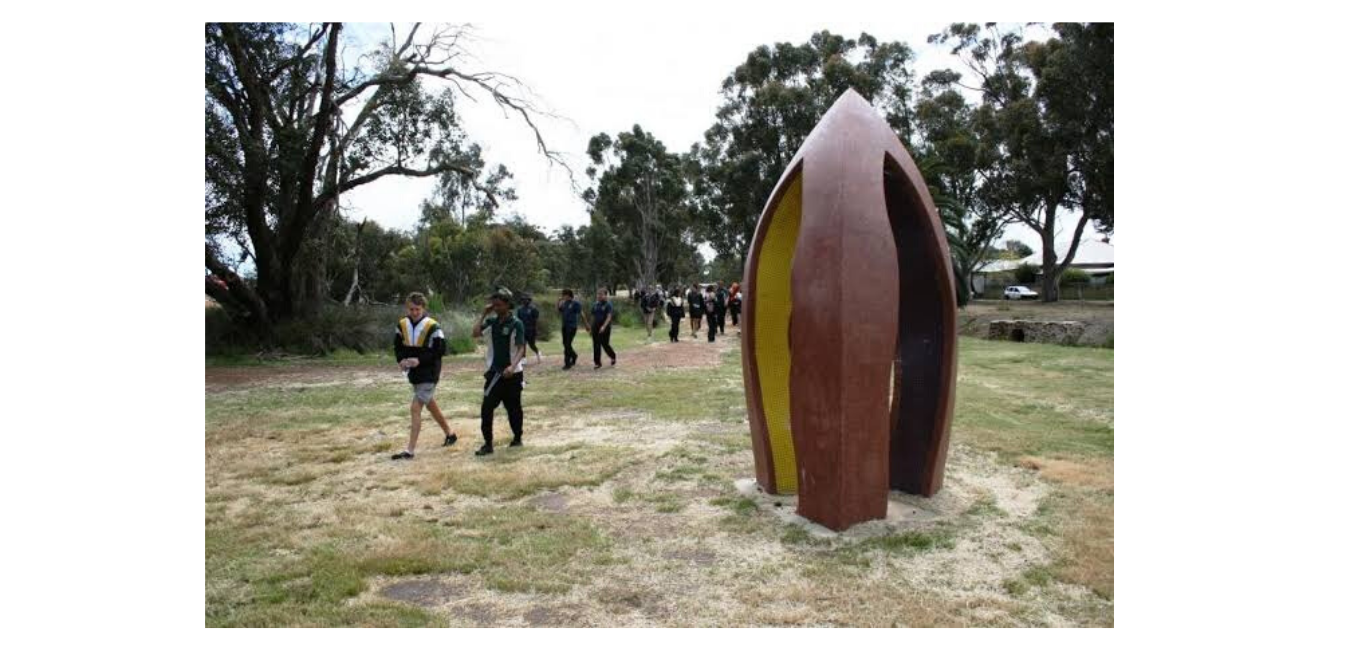
Fifteen young people took part in the project and learned the process of construction and installation involved in public art, as well as the flora and fauna associated with each of the Noongar Seasons.

The Noongar seasons are: Bunuru (February/March), Dejeran (April/May), Makuru (June/July), Djilba (August/ September), Kambarang (October/November) and Birak (December/January).
Stage Three – Narrogin Poles
In 2011 CANWA partnered with NowGreen and supervised Aboriginal youth to create public artwork on an original artwork site where treated pine posts were installed and painted in traditional colours at the southern end of Gnarojin Park in 1993 and 1994, as part of the Town of Narrogin’s Nyoongah Revival Project, which cleared the area and created a new walking trail and seating.
The intricate carvings and culturally inspired paintings on the poles gave this section of the creek a new lease on life. The 2011 project was facilitated by public artist Jahne Rees, NowGreen coordinator Graeme Miller and Aboriginal artist Ross Storey.
The NowGreen participants each designed one of the poles and the project resulted in a series of vibrant poles, launched as part of the Wheat Beats event held at the Narrogin Skate Park in 2011. Participants received accreditations in Conservation and Land Management for their participation.

Stage Four – The Charrnock Woman
The Charrnock Woman project celebrates a significant Noongar site along the banks of the creek, and tells the story of the evil spirit of The Charrnock Woman from the dreamtime. The story of the Charrnock Woman was first told during one of CANWA’s Yarns of the Heart doll making workshops.
This stage of the Gnarojin Creek public art project started in 2012, when Narrogin primary and high school students worked with digital artist Steven Aiton using sand animation, stop motion animation and blue screen technology to create the traditional Charrnock Woman story, written by Bibbulmun artist Toogarr Morrison.
In 2013 the Narrogin community, along with mosaic artist Danka Sholtz von Lorenz and local Noongar artist Ross Storey, designed and created mosaics inspired by the Charrnock Woman story, and their sculptural work incorporated into the animations created by the school students.
The mosaics were installed on existing rock formations along the creek and included QR codes, which allows visitors to scan the code with a smart phone or tablet and view the Charrnock Woman animated stories online.
The Gnarojin Creek Public Art project highlighted the significance of the Aboriginal walk trail along the Gnarojin creek to the local Aboriginal community in Narrogin.
